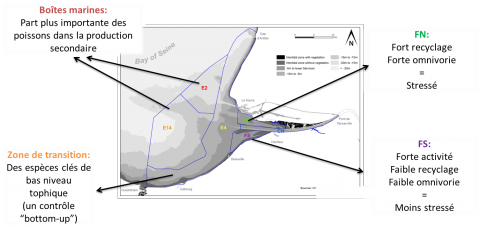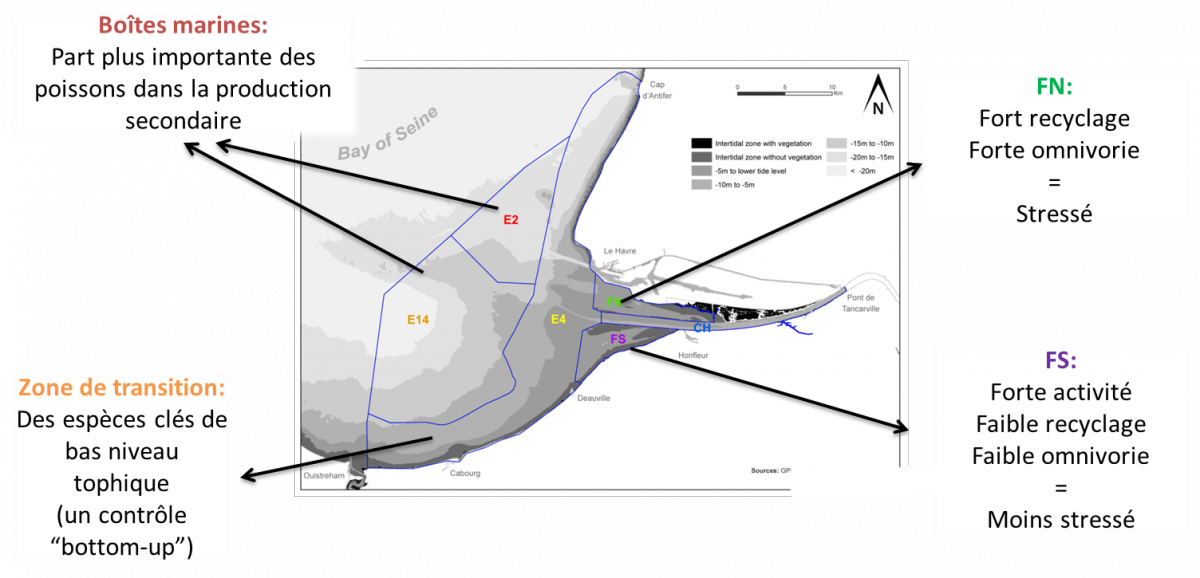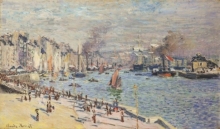
ANTROPOSEINE ANalyse de la structure TROPhique et cOntribution des habitats de l’estuaire de la SEINE
Project GIP Seine-Aval. January, 2014-March, 2017
The ecology of the Seine estuary and the adjacent Bay of Seine have been widely described in the last decades. In the continuity of the ecosystem modeling work initialed by Hervé Rybarczyk, Jean-Claude Dauvin, Pierre Chardy and Jérémy Lobry, the project ANTROPOSEINE aimed at integrating this information into food web models describing the ecological functioning of this sector. The main results of our research were the following:
- Climatic and environmental factors play a major role in determining the fish community dynamic, but the main driver is through a control by benthic and zooplanktonic production.
- Intertidal habitats play a major role as bird and fish nurseries, both in the south and the north part of the inner estuary.
- These zones play a central role for the trophic capacity of the estuary for predators. It is a priority to maintain this role in the context of general marinisation of European estuaries.
Applying a theoretical framework for interpreting Ecological Network Analysis indicators in estuarine ecosystems is far from easy. These are geological systems which are young and ephemeral. In this context, the conceptual framework of maturation of ecosystems losses consistency. The theories should be rewritten according to this youth. In such a fluctuating context, the estuarine ecosystem in maintained in a situation far from maturity. Paradoxically, it may be source of a kind of resilience, with recycling and omnivory playing a key role in this buffering of perturbations.
Partners : M2C, IRSTEA Bordeaux
BOREA contact : Nathalie Niquil, Team 5, nathalie.niquil@unicaen.fr

The six studied zones and the main caracteristics derived from there modelling. The zones are defined based on the maps of Baffreau et al. 2017 and the modelling work leading to these conclusions are presented in Tecchio et al 2015 and 2016. © Tecchio Samuele and Nathalie Niquil


